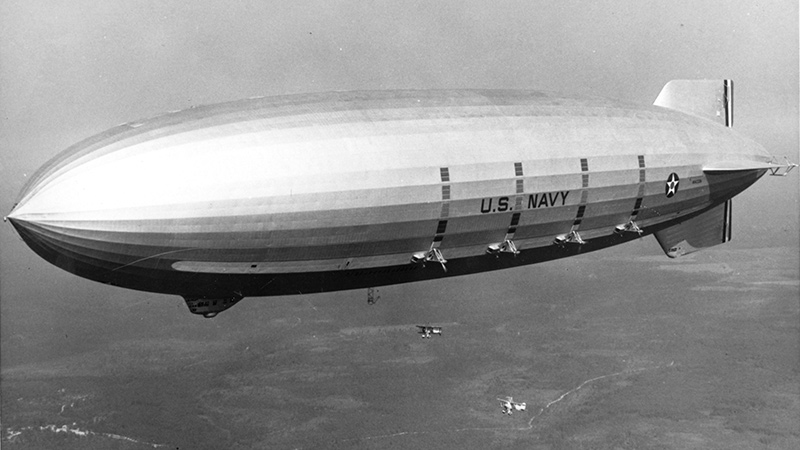Stay Up to Date
Submit your email address to receive the latest industry and Aerospace America news.
Eighty-two years after the crash of a Navy airship designed as an airborne takeoff and landing point for biplanes, the concept of basing planes on dirigibles may be on its way back, this time as a base for drones.
TP Aerospace of Massachusetts is designing a blimp it calls Skybase for an undisclosed client. The blimp could launch, recover and refuel five 90-kilogram drones equipped with cameras, says Paul Adams, head of operations and part owner of the company.
TP Aerospace is not alone in the trend of basing drones on dirigibles. The retail giant Walmart applied for a U.S. patent in August for “gas-filled carrier aircrafts” from which unmanned aircraft would deliver products to customers. Last year, Amazon patented a similar idea.
Why would anyone want to build an airborne aircraft carrier? As drones have become ubiquitous and cheaper to fly, entrepreneurs are starting to recognize their limitations. These small unmanned aircraft “don’t have 3,000 miles of range and they’re not going eight-tenths the speed of sound,” says Ron Hochstetler, a lighter-than-air airship technology consultant, making a comparison to jets. “They need to be closer typically to where their mission is, and unless you’re on the ground or the water nearby, you’ve only got the air as a way to get you closer.”
Skybase would measure about 60 meters long, similar in size to today’s Goodyear blimps but considerably smaller than the Navy’s flying aircraft carrier that crashed in 1935 off the coast of Point Sur, California.
The USS Macon measured 239 meters long and could carry up to six F9C Sparrowhawk biplanes. By contrast, Skybase would carry fixed-wing or quad-rotor drones, depending on the client’s mission, equipped with cameras. A pilot on the ground would operate the blimp and drones, freeing Skybase to stay aloft for two days or more at a time, Adams says.
Amazon and Walmart are purposefully vague about their concepts, but airship industry observers believe their proposed floating warehouses would need to be massive to make sense economically and to accommodate the features described in their patent documents. Walmart’s patent application describes an airship with a kitchen, bunks and bathrooms for workers who sleep and work in shifts. Amazon’s patent calls for the airship to carry equipment like forklifts and trolleys. The Amazon patent does not say how big this floating warehouse would have to be, but says a “shuttle” airship measuring 30 meters long would loft workers to the warehouse and bring fresh inventory and new delivery drones.
Amazon’s main airship would float above commercial airspace at 45,000 feet and on occasion descend to 2,000 feet to make advertising visible to people on the ground, according to the patent. Two airship experts questioned the viability of the concept, saying that to fly at 45,000 feet, an airship would need about six times more lifting gas than would be required to carry the same weight at 2,000 feet.Spokesmen for Amazon and Walmart declined to comment on the retailers’ proposed airships. Amazon’s Prime Air division has been flying drones for private delivery tests in the U.K.
About Keith Button
Keith has written for C4ISR Journal and Hedge Fund Alert, where he broke news of the 2007 Bear Stearns hedge fund blowup that kicked off the global credit crisis. He is based in New York.
Related Posts
Stay Up to Date
Submit your email address to receive the latest industry and Aerospace America news.




